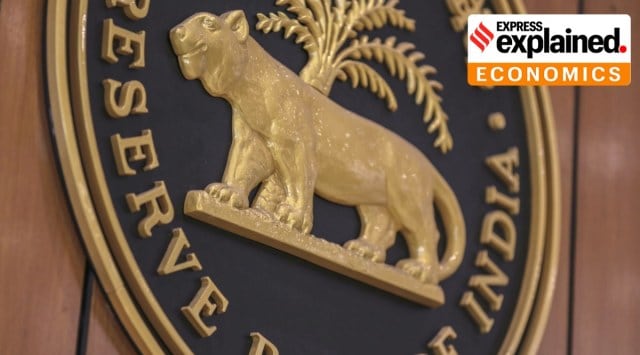Interest rates: Why has RBI opted for status quo again?
Sensex rallies over 400 points as accommodative stance is retained
 The Reserve Bank of India will unveil the monetary policy today. (File Photo)
The Reserve Bank of India will unveil the monetary policy today. (File Photo)Signalling that the country is not yet ready for a monetary tightening or a hike in interest rates, the six-member Monetary Policy Committee (MPC) of the Reserve Bank of India (RBI) on Thursday kept key policy rates – Repo rate, Reverse repo rate and the Bank rate – unchanged for the 10th time in a row, and retained the accommodative policy stance.
Stock markets cheered the decision, with the Sensex rallying over 400 points to trade at 58,883.80, and the Nifty gaining 126 points at 17,590.55 in intra-day trade.
Explaining the rationale for the decision, RBI Governor Shaktikanta Das said the MPC was of the view that continued policy support – status quo on interest rates – was warranted for a durable and broad-based recovery after taking into consideration the outlook for inflation and growth, in particular the comfort provided by the improving inflation outlook, the uncertainties related to Omicron and global spill-overs.
No change in Repo rate
The central bank has retained the repo rate – the rate at which the RBI lends funds to banks – at 4 per cent to boost growth. This means banks won’t hike lending and deposit rates and EMIs on loans will remain unchanged.
The RBI has reduced key policy repo rate by 115 bps to 4.0 per cent and reverse repo rates by 155 bps to 3.35 per cent since February 2020. Banks had since then reduced their interest rates (both deposits and lending) significantly.
The large size of the FY23 market borrowings, and with no progress on the inclusion of Indian debt market in the global bond indices, might have prompted the RBI to delay the liquidity normalisation in an effort to keep the cost of large borrowings programme under control, said an analyst.
It also retained the marginal standing facility (MSF) rate, and kept the Bank Rate unchanged at 4.25 per cent.
Reverse repo rate unchanged
Contrary to expectations of a hike, the RBI has retained the reverse repo rate – the rate at which the RBI borrows money from banks – at 3.35 per cent. Bond yields had spiked after the government announced higher market borrowing of Rs 14.95 lakh crore in the next fiscal.
Markets were expecting that the time was now appropriate to go for a 20 bps hike on reverse repo rate as a larger corridor has resulted in rate volatility. “We believe that it would have been opportune to start policy normalisation with at least a 20 bps hike in reverse repo without much of a market impact,” said Upasna Bhardwaj, Senior Economist at Kotak Mahindra Bank.
Accommodative policy stance to continue
The policy panel, by a 5 to 1 majority, decided to continue with the accommodative stance “as long as necessary to revive and sustain growth on a durable basis and continue to mitigate the impact of Covid-19 on the economy, while ensuring that inflation remains within the target going forward”.
While the current stance of ‘accommodative policy for as long as necessary to revive growth’ was up for a review, analysts said the RBI is likely to wait for some more time as the economic recovery is uneven and the Omicron variant has dented the sentiment.
The trend across the world is tightening of liquidity, with the US Federal Reserve set to hike the rates soon.
MPC Member Jayanth Varma on Thursday voted against retaining the accommodative policy stance.
Inflation to moderate
The RBI has projected a 5.3 per cent consumer price (retail) inflation for the current financial year 2021-22 (FY22) despite rising crude oil prices.
Retail inflation for the next fiscal (FY23) is projected at 4.5 per cent, below the earlier projections.
The MPC noted that inflation is likely to moderate in the first half of 2022-23 and move closer to the target rate, thereafter providing room to remain accommodative. Timely and apposite supply side measures from the government have substantially helped contain inflationary pressures, it said.
The RBI would prefer the government slash excise duty to ease the pressure on inflation. Moreover, persistent supply constraints may increase cost push pressures, already evident in WPI inflation, which persisted in double-digit levels since the last nine months. Food inflation is also expected to increase further due to supply bottlenecks and adverse weather conditions on the back of the waning base effect. Oil prices are already above $90 per barrel and threatening to go higher. Inflation risks, especially from fuel prices, remain a concern and can materialise relatively soon, said an analyst.
Growth forecast
The central bank has projected the real GDP growth at 7.8 per cent for the next financial year (2022-23) while real GDP growth at 9.2 per cent for 2021-22 takes it modestly above the level of GDP in 2019-20.
“Recovery in domestic economic activity is yet to be broad-based, as private consumption and contact-intensive services remain below pre-pandemic levels,” the MPC said.
With the Covid pandemic impacting recovery, analysts were expecting a slight downward revision in the GDP growth rate for FY22. Even as the economy has shown a revival, the first advanced estimate of GDP for the current fiscal shows that it has barely reached the pre-pandemic level.
In some contact-intensive sectors, the revival has been slow and is yet to reach the 2019-20 level. These are the sectors that are employment-intensive, and two years of the continuous drag has created a huge burden of unemployment.
Virtually all the growth engines, except public investment and exports, have been stuttering; both private consumption and investment are yet to revive, Brickwork Ratings said.
Newsletter | Click to get the day’s best explainers in your inbox





- 01
- 02
- 03
- 04
- 05

































